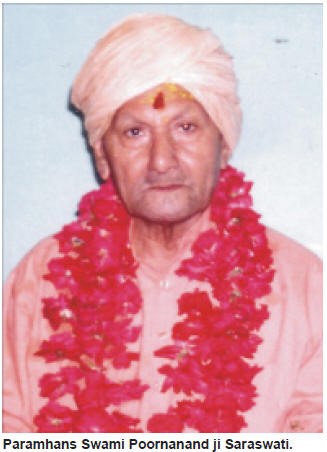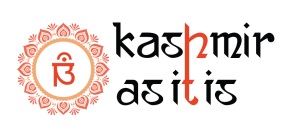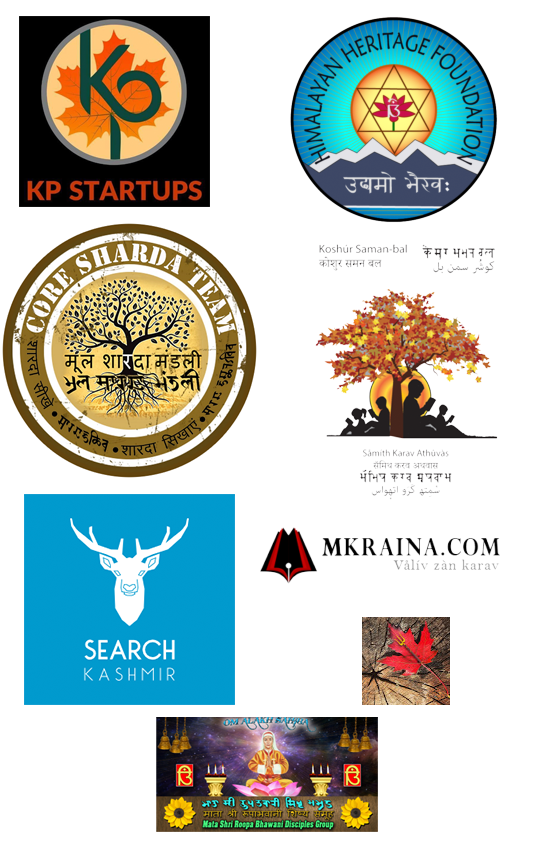NAME – Paramahans Swami Poornanand Ji Saraswati (“The Man and the Legend”)
Born – Swamiji came from the well-known Dhar clan of Safakadal, Srinagar (1912 – 1196).

Parents – There are few details available about his family and the circumstances in which the family left its homeland. Swami ji father had held a high position in J&K State’s revenue bureaucracy.
Childhood – When Swamiji was 10 days old, his family was involved in some dispute with their neighbors. They had to leave Kashmir and landed in Lahore. An influential member of Maharaja Ranjit Singh’s clan was able to help the family return to Kashmir and get their property back. When his mother died she had willed that the property of the family be divided equally among the three children. Swamiji gave his share to his sister.
In 1922 Swamiji, a student of 3rd standard was on Bharat Braman to visit different holy places; he was with close elderly family member. There is a famous seven-mother goddess temple. At its Dheodi Ghat was an ashram of Govindanand Saraswati. On seeing Govindanand ji Swami felt deeply impressed and expressed desire to stay at the ashram permanently. He made request to Govindanand ji to take him as his disciple. To this Govindanand ji replied”I make Gurus, not disciples. “The precocious child replied “Then make me a guru.” Govindanand ji told the close relative of the child, “Please tell the father of the boy that the child feels like staying here and as and when his father wishes to take him back he can do so.
Diksha started with Trikal Sandhya and Gayatri Purus-hacharan during the day. During night the students had to recite KALI beej MANTRA. The discipline was quite rigid, the boys had to take self cooked meals once a day and attend to every work themselves. Swamiji’s other companion was Karim, a Muslim by birth. When someone suggested to Govindanand ji giving new name to Karim, he objected saying,” Karim is one of the Beej shabad of Maa shyama” hence no need to change the name.
Contributions – After the formal training was over, Govindanand ji asked Swamiji and Karim to jump into the struggle for India’s freedom. Indore was a centre of revolutionary activities those days. A new group had been formed with its base at Midnapore. Swamiji, Karim and some Laxmi were active members in Bose’s new group. This group was operating all over the country. Swamiji’s main role was to ferry arms, received from Germany, to different places in the country. His area of operation included -Bombay, Mhow, Indore, Bhind, Morena, Agra, Delhi, Lahore, and Peshwar and had warrants in 5-6 states. Swamiji was in active contact with princes to enlist their support for revolutionary freedom struggle and mobilize financial support from them. Soon Swamiji became a legend for his activities.
Swamiji was fluent in Sanskrit, Hindi, Urdu, English Marathi and Bengali. Some of his work is – Compilation of Durga Saptashati, Srividyarnav Tantra, Mantrodhar of Kamkala kali and Guhya Kali from Mahakalsahinta, Kamkala kali mantra.
Swami ji used to do Sadhna in night and used to keep the present Grah as sakshi for his sadhna. In his last years Swamiji was working on Holy Quran and The Bible but because of failing eyesight he could not complete these. He restricted himself to only Path-Puja and stopped all writing work. Throughout night he would be busy with puja. He would say that he used to receive divine orders to work on different subjects. Swamiji would say that mantras in Hinduism had to be charged first through recitation. He used to solve difficult questions in the night through Puja. Swamiji had equal respect for all religions. Swamiji even while sitting at home would be aware about everything happening outside. Swamiji abhorred superstitions and charlatanism. He would say,” Any day you feel happy is an auspicious day. ” He hated clergy and god men. He believed in spirits and would suggest to lit some incense to turn these away. Swamiji would always tell us to lit agarbati on right corner while entering home. He had premonition about his death. He died of intracerebral hemorrhage in 1996.
References:







